This is a video response to a question that Ayang Daniel Johns asked me on Facebook.
Do you have a question about guitar playing? Please leave a comment below & I might cover it in a future post. =)
If you like the lesson, please sign up for my mailing list to get more lessons like this! =)
[NOTES]
Chord Voicing Types
a) 4-part close voicings
b) Drop-2 voicings
c) Drop-3 voicings
d) Drop-2&4 voicings
Click here to download a PDF Version of the notes:
What Are Drop-2, Drop-3 and Drop-2&4 Voicings Handout
BONUS PRACTICE MATERIAL:
As an example, below are Drop-2, Drop-3 and Drop-2&4 voicings and inversions for Cmin7.
Want to download all these files as PDF files? Here they are:
Cmin7 Drop 2 Inversions Bottom Set
Cmin7 Drop 2 Inversions Middle Set
Cmin7 Drop 2 Inversions Top Set
Cmin7 Drop 3 Inversions Bottom Set
Cmin7 Drop 3 Inversions Top Set
Cmin7 Drop 2 and 4 Inversions Bottom Set
Cmin7 Drop 2 and 4 Inversions Top Set
These are free downloads to help you learn this material. If you found it helpful, please subscribe to my mailing list to get even more stuff like this in the future!
[PDF Version]
Cmin7 Drop 2 Inversions Bottom Set
[PDF Version]
Cmin7 Drop 2 Inversions Middle Set
[PDF Version]
Cmin7 Drop 2 Inversions Top Set
[PDF Version]
Cmin7 Drop 3 Inversions Bottom Set
[PDF Version]
Cmin7 Drop 3 Inversions Top Set
[PDF Version]
Cmin7 Drop 2 and 4 Inversions Bottom Set
[PDF Version]
Cmin7 Drop 2 and 4 Inversions Top Set
UPDATE: Check out my new instructional video, Yummy Jazz Guitar Chords: Az Samad’s Creative Chord Control 101 here: https://gum.co/APtDj


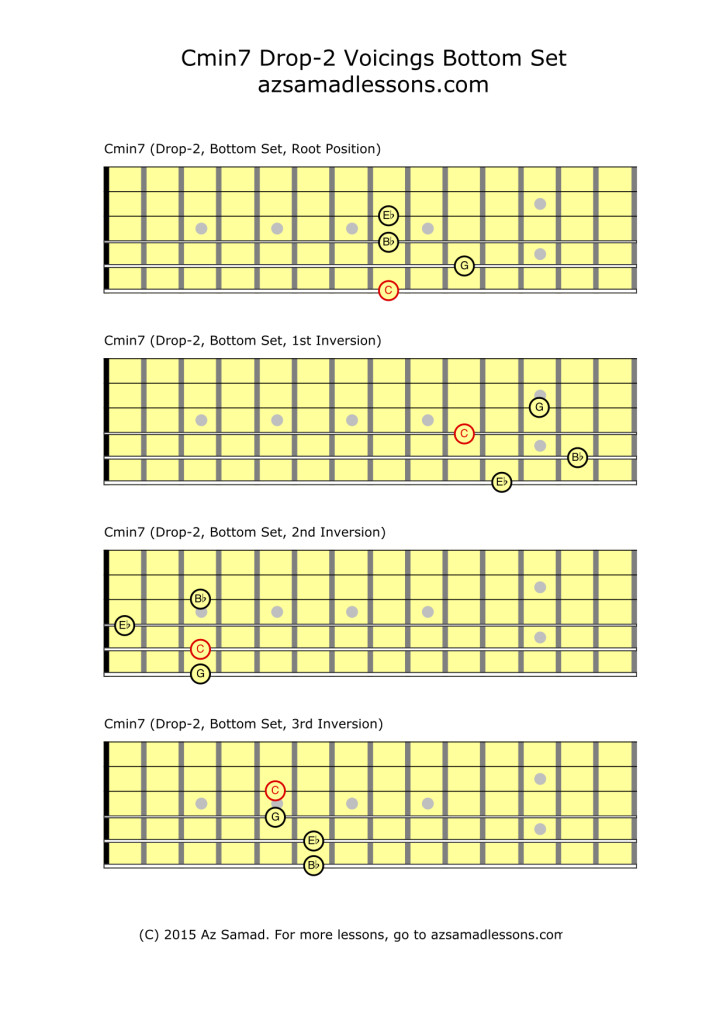
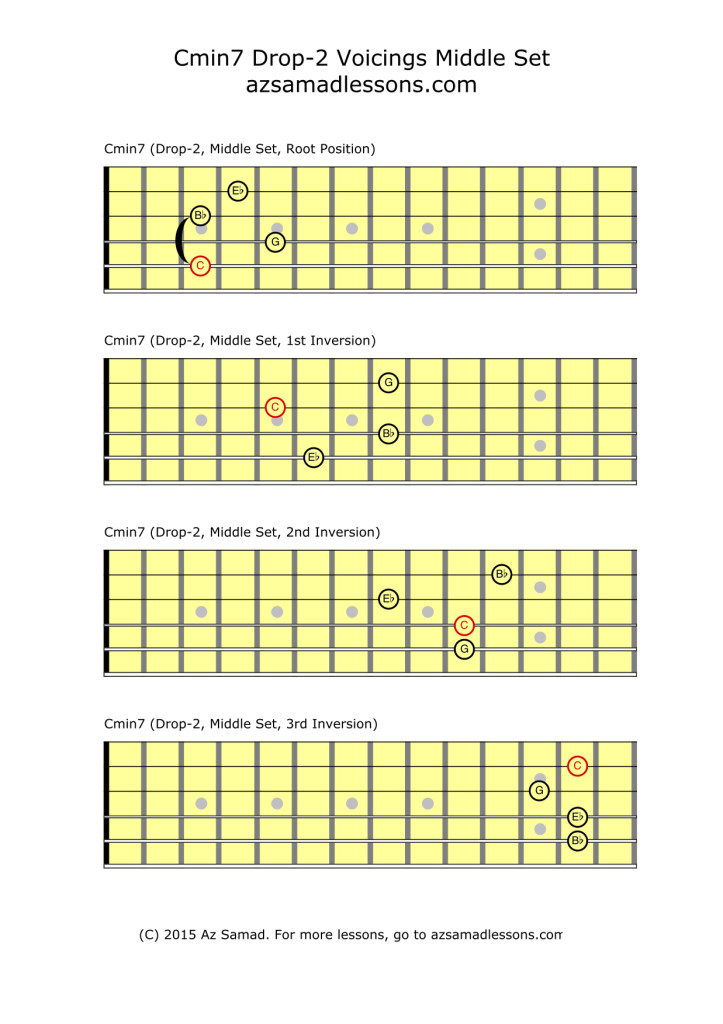
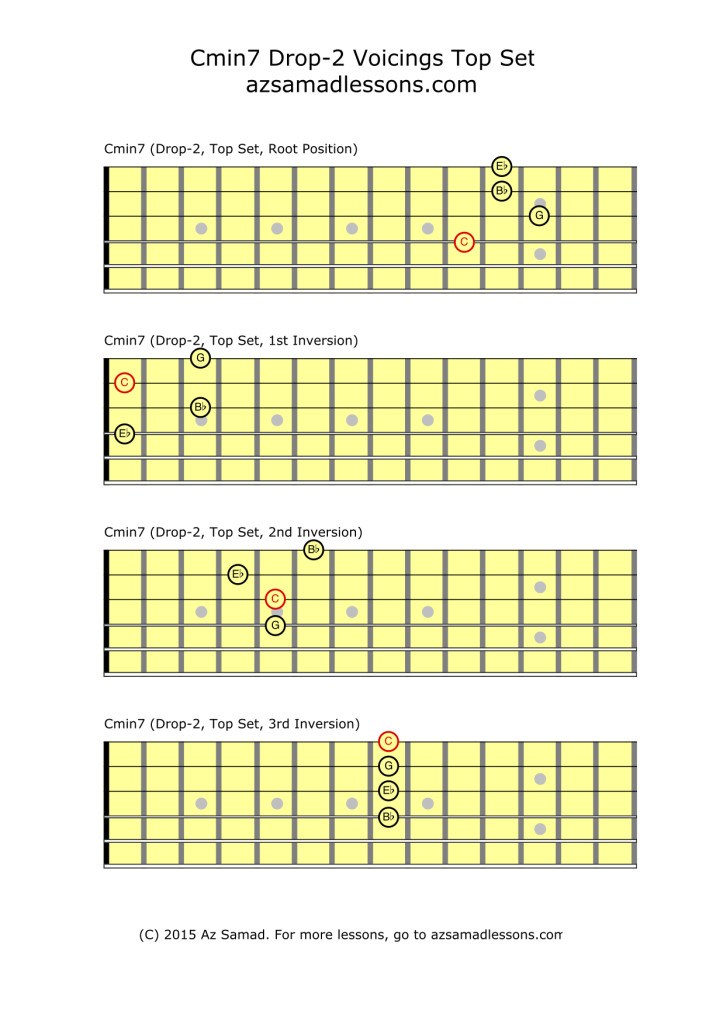

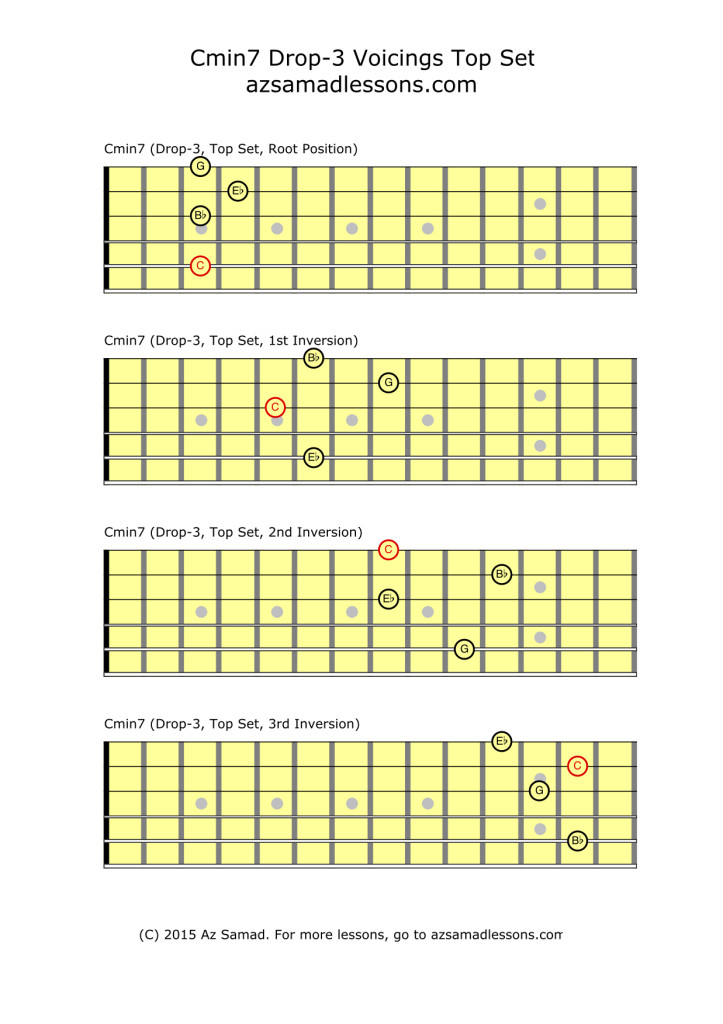

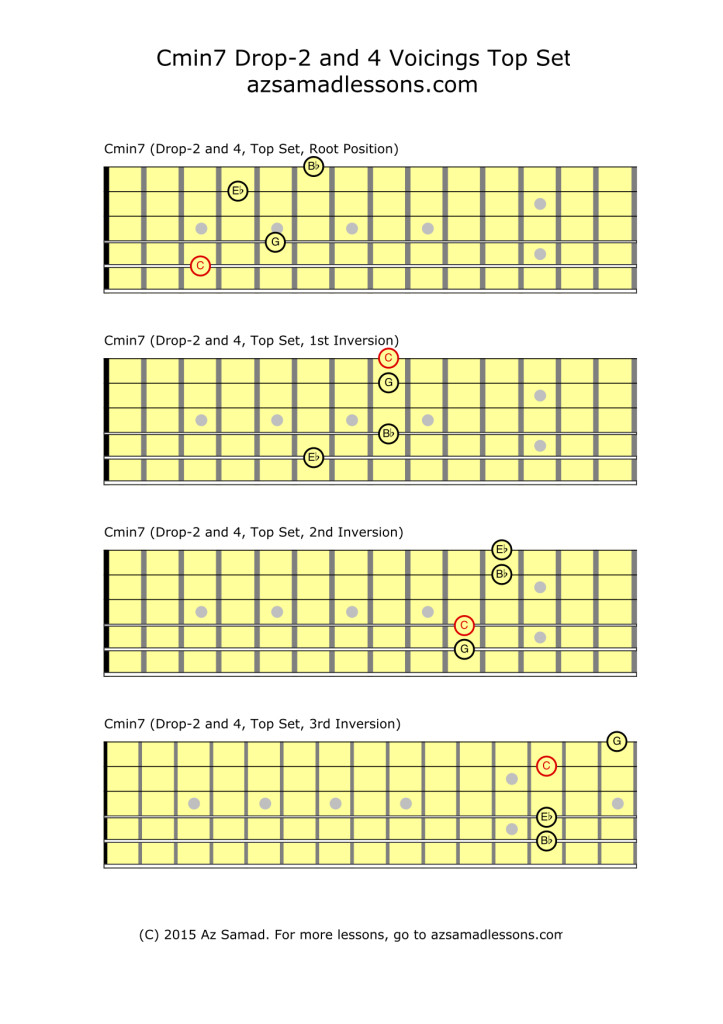
Hi Samad, good and intriguing video indeed. I notice it’s drop 2/3/4. What about more extended chords with more than 4 voicings for example up to 13th, which involves 1, 3, 5, 7, 9, 11, 13th? How many voicing to drop then? Also is there a specific rule of thumb on which to drop,? Thanks again.
Thanks for watching the video Pakito! For chords with more than 4 notes in the voicings, there different rules. In general when you have 5-note voicings for horns, typically one note is doubled. For guitar, It’s usually the root, 3rd and 7th, as well as two tensions (some kind of 9th + 13th). Sometimes, there is no root but instead the guidetones (3rd and 7th) and two tensions and a chord tone or three tensions. With tensions, it’s a topic that usually will take a one-semester college course to cover. Hope these guidelines help! =)
Does the C10 chord in piano voicing where the 3rd is raised to the 10th apply in guitar? thanks again
I’m not quite sure what a C10 chord is. If it’s a C Major triad with the E played a 10th away from the root, then that’s common on guitar. On guitar, playing 10ths are very idiomatic and happen on songs like “Blackbird” by The Beatles. Jazz guitarists like Martin Taylor are also fond of this as a part of their solo guitar playing.
Great explanation. Thorough and no mumbo jumbo. Very clear from the start to end. Thank you very much.
Really happy to hear that John. That’s what I felt with some of the lessons I’ve seen online about this topic – some make it too elaborate. Glad you found it clear! 🙂
Hi Samad, I used your diagrams and found all these on Chuck Wayne’s Guitar Arpeggio Dictionary. They just popped right out, you can follow the arpeggio inversions around in a circle and each diagram contained the root/1st/2nd/3rd inversions of all the dropped voicings. I had downloaded the two PDFs, there’s a “key” one that’s labeled with fewer pages and there’s a “shape” one with many more pages but just the shapes. There’s no notes, so you’d have to label if needed. There’s fingerings which is nice, because the physical shape is emphasized.
I found it interesting that in your diagrams as you move from one inversion to the next, in Chuck’s diagrams you also move around the cycle to the next inversion to find your next chord.